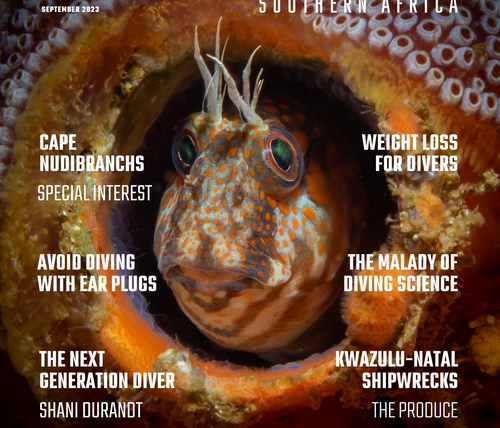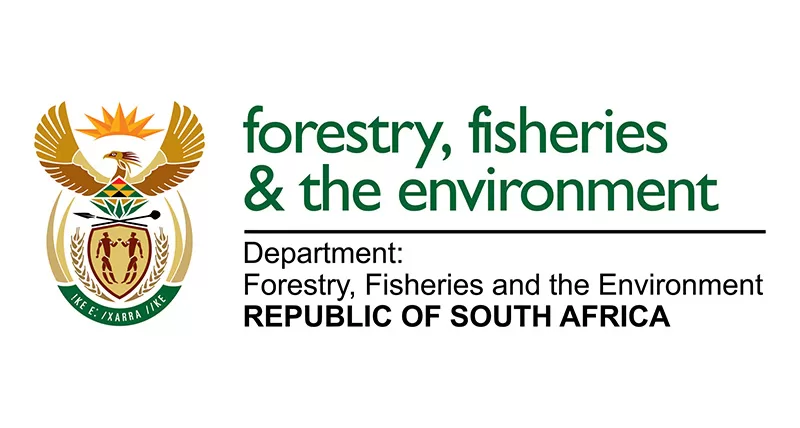Partridge Point - False Bay
Partridge Point – Simonstown Dive Site
- Access: Boat Access Only
- Experience Level: Suitable for Snorkelers, Freedivers, Open Water Scuba Divers, and Advanced Open Water Scuba Divers
- Interests: Cape Fur Seals, Kelp Forests, Reefs
- Depth Range: 0m to 25m
- Average Dive Time: Approximately 60 minutes
- Other Dive Sites in the Area: Seal Rock, Deep Partridge, Dave’s Caves, and Peters Pinnacles
Description:
Partridge Point, located in Simonstown, is one of the most frequented dive sites in False Bay. It offers a captivating underwater world that entices divers from all corners of the globe. The primary attractions at this site are the charismatic Cape Fur Seals and the enchanting Kelp Forests.
On most days, you can expect to see three or four dive boats in the area, with divers engaging in activities such as Scuba diving and Snorkeling with the playful seals.
The marine life at Partridge Point is incredibly diverse, showcasing a variety of fish species, a wide range of invertebrates, and the charismatic Cape Fur Seals. When conditions are ideal, the underwater scenery can be truly spectacular. Notably, this site is situated at the southern edge of the Castle Rocks restricted zone, within the Table Mountain National Park Marine Protected Area. Fishing has been prohibited here for many years, resulting in a flourishing fish population. In terms of fish variety and abundance, Partridge Point is second only to Castle Rocks among Cape Peninsula dive sites.
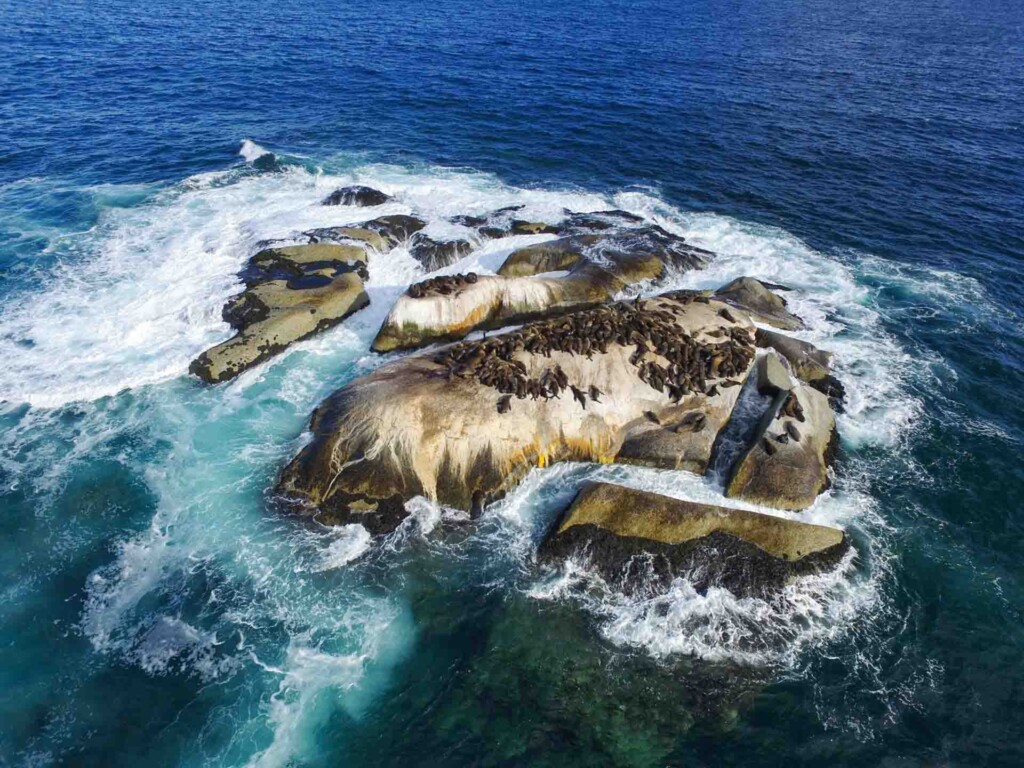

The reefs around Partridge Point offer remarkable diversity, allowing divers to encounter a host of aquatic treasures during a single dive. Many divers choose to spend around 30 minutes interacting with the seals near Seal Rock before embarking on an exploration of the rest of the reef as they move away from the rocky formations.
This expansive reef system comprises multiple spots and sites that are perfect for both Scuba diving and Freediving. The depth ranges are typically relatively shallow, with an average depth of 5 to 12 meters, making it accessible to divers of all skill levels. However, there are notable drop-offs, such as Deep Partridge, where divers can descend to 25 meters for a deeper adventure.
The underwater terrain consists of numerous granite boulders and outcrops, with some rising several meters above the surface. The reef’s topography varies, with some areas featuring low formations of small boulders, rubble, and low corestone outcrops, while others present a more wild and chaotic landscape, characterized by massive boulders perched on even larger ridges and flatter outcrops. This creates intriguing overhangs and swim-throughs at select locations. The reef is surrounded by sandy bottoms to the south and east, while to the north, it extends almost as far as Castle Rocks in shallower waters, with its exact boundaries in deeper water remaining uncertain. The reef at Partridge Point is partly divided by several sand patches, separating it into distinct sub-sites.
During the summer months, divers often encounter large Short-tail Stingrays and Gully Sharks at Dave’s Caves and Peters Pinnacles while exploring the kelp forests near the shore.
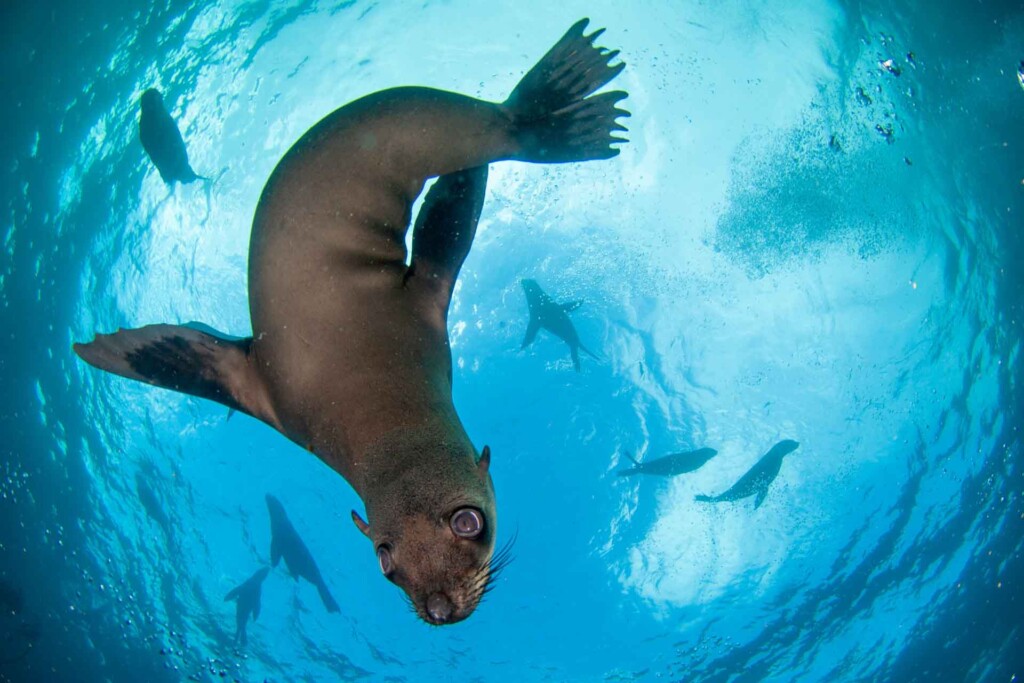
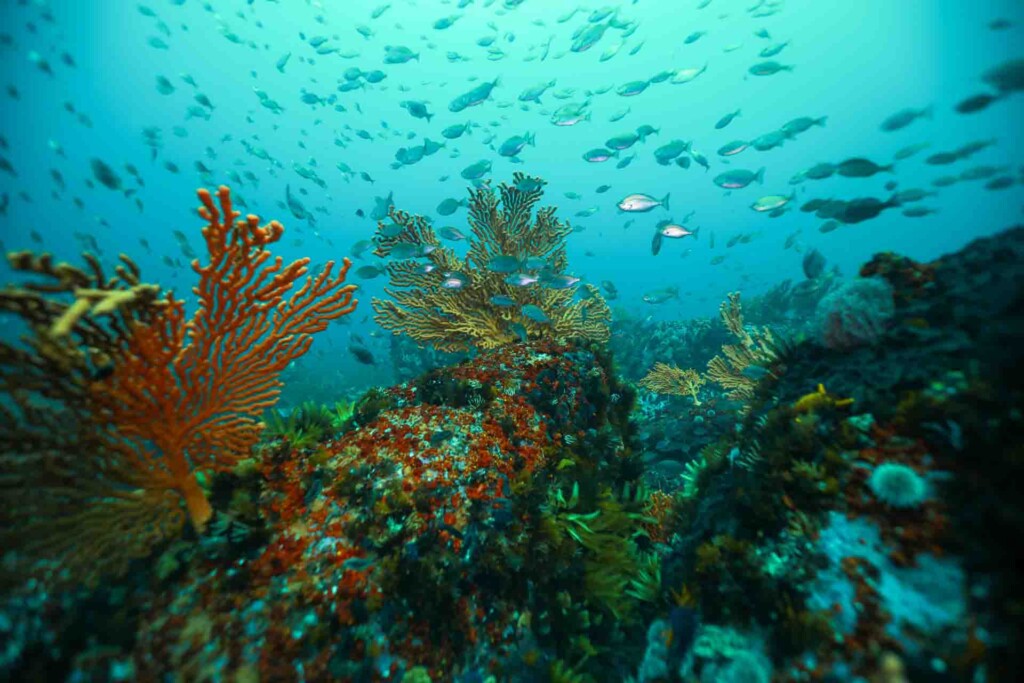
Visibility at Partridge Point, like other dive sites in the area, can vary. Under favorable conditions, visibility typically ranges from 5 to 10 meters, with exceptional days offering up to 20 meters. It generally matches, though occasionally falls slightly short of, the visibility found at the Smitswinkel Bay wrecks.
The site is typically at its best following a northwesterly wind, but it can still offer an enjoyable experience even during easterly winds, provided they are not too strong and the swell remains manageable. It’s worth noting that considerable surge can occur in long-period swells, even when the wave height is low.
Partridge Point is exposed to south easterly winds and waves and is moderately exposed to southwesterly swells, especially long-period swells that wrap around Cape Point. A south-southwest swell with a medium to long period can pose a significant challenge to divers at this site. While winter is the prime season for diving, opportunities can also arise during autumn and spring, and occasionally, even in summer, when favorable conditions align.
In summer, fronts are often followed by strong south easterly winds, which create an uncomfortable short onshore chop during the boat ride and can impact underwater visibility.
Recommended Equipment:
Given the high boat traffic in the area, we strongly recommend using a Delayed Surface Marker Buoy (DSMB) to mark your ascent at the end of the dive. Typically, divers at Partridge Point use 12L air cylinders, as the dive is relatively shallow, and Nitrox is not commonly used.
- Dive Light: Consider bringing one if you intend to search for smaller critters in the overhangs.
- Camera: For capturing the fast-moving seals, GoPro cameras are the preferred choice for most divers. Additionally, SLRs with wide-angle lenses are often preferred for capturing the stunning underwater scenery.

